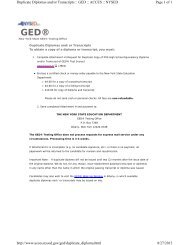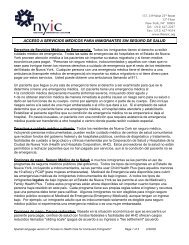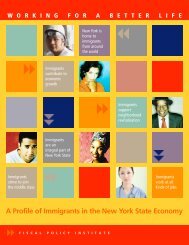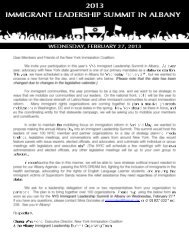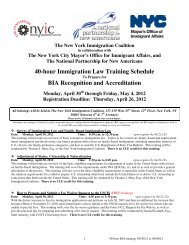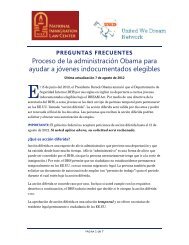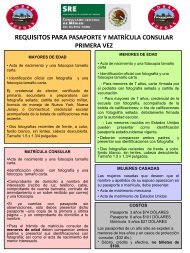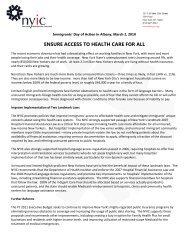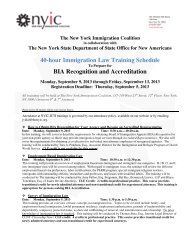Major Legislative Milestones in US Immigration History - New York ...
Major Legislative Milestones in US Immigration History - New York ...
Major Legislative Milestones in US Immigration History - New York ...
Create successful ePaper yourself
Turn your PDF publications into a flip-book with our unique Google optimized e-Paper software.
under immigration reform will need some form of stop-loss protection aga<strong>in</strong>stcatastrophic medical costs; options <strong>in</strong>clude Medicaid, 4 Medicare, or restrictedscope Medical Assistance for an emergency medical condition (“emergencyMedicaid”). 5 This protection will also ensure that safety net health providersare reimbursed, at least <strong>in</strong> part, for the costs of treat<strong>in</strong>g low-<strong>in</strong>come patients.RESIDENCYParticipants <strong>in</strong> immigration reform should be treated at least as favorably as H-1 visa holders for the purposes of participat<strong>in</strong>g <strong>in</strong> programs and services thatcurrently impose a state or local residency requirement. Examples of programsthat require proof of residency but not legal status <strong>in</strong>clude public health services,federally qualified health centers, hospital reimbursement for the treatmentof an emergency medical condition through “emergency Medicaid,” and, <strong>in</strong>states such as <strong>New</strong> <strong>York</strong>, free or subsidized <strong>in</strong>surance for children, pregnantwomen, and <strong>in</strong>dividuals liv<strong>in</strong>g with HIV and AIDS. 6PUBLIC NOTICEThe nation’s experience with the recent drug reimbursement or MedicarePart D program clearly demonstrates how important it will be for the governmentto provide clear <strong>in</strong>structions about health programs to participants <strong>in</strong>immigration reform. Clear communications will be vital to address<strong>in</strong>g concernsand misconceptions that lead many foreign-born <strong>in</strong>dividuals to avoidus<strong>in</strong>g health programs. 7Policy OptionsAccess to health care is important to workers, employers, and communitiesalike. Public health is safeguarded only when all members of a community arewill<strong>in</strong>g to come forward for screen<strong>in</strong>g and treatment <strong>in</strong> the event of an epidemicor biological or chemical exposure. Employers experience workers’ illness,4 The federal Medicaid program’s medically needy (MN) option allows states to extend Medicaid eligibility topersons whose <strong>in</strong>come and/or resources are above the eligibility level set by their state. Persons may qualifyimmediately or may “spend down” by <strong>in</strong>curr<strong>in</strong>g medical expenses that reduce their <strong>in</strong>come to or below theirstate’s MN <strong>in</strong>come level. Thirty-five states have adopted the medically needy option, and the rema<strong>in</strong><strong>in</strong>gstates have Medicaid for people who are “near poor.” More <strong>in</strong>formation can be found at:http://www.cms.hhs.gov/MedicaidGenInfo/03_TechnicalSummary.asp#TopOfPage.5 J. Perk<strong>in</strong>s, “Medicaid Coverage of Emergency Medical Conditions,” Clear<strong>in</strong>ghouse Review Journal of PovertyLaw and Policy 384 (Sept/Oct 2004).6 <strong>New</strong> <strong>York</strong> State, Department of Health — Medical Assistance Program: GIS 04 MA/003 Attachment 1,2004.7 T. Bauer, J. Bergman, C. Hill, J. Fuld, and L. Weiss, “Access to Health Insurance and Health Carefor Children <strong>in</strong> Immigrant Families” (<strong>New</strong> <strong>York</strong>: The <strong>New</strong> <strong>York</strong> Academy of Medic<strong>in</strong>e, publicationforthcom<strong>in</strong>g).A ppendix II 169



